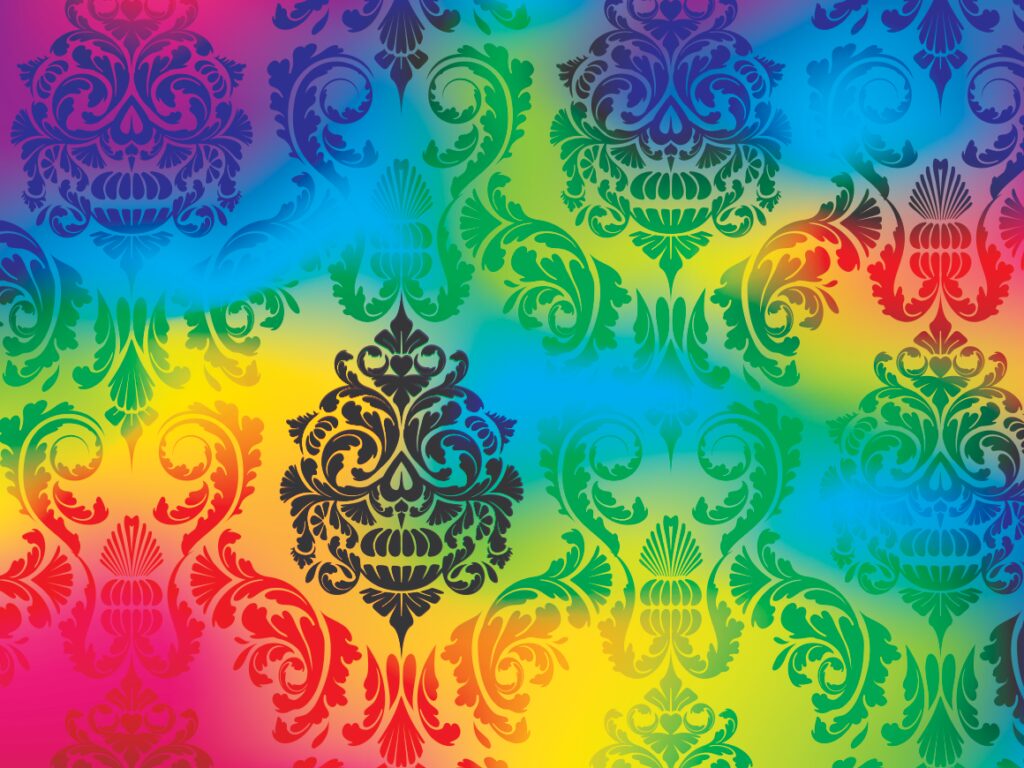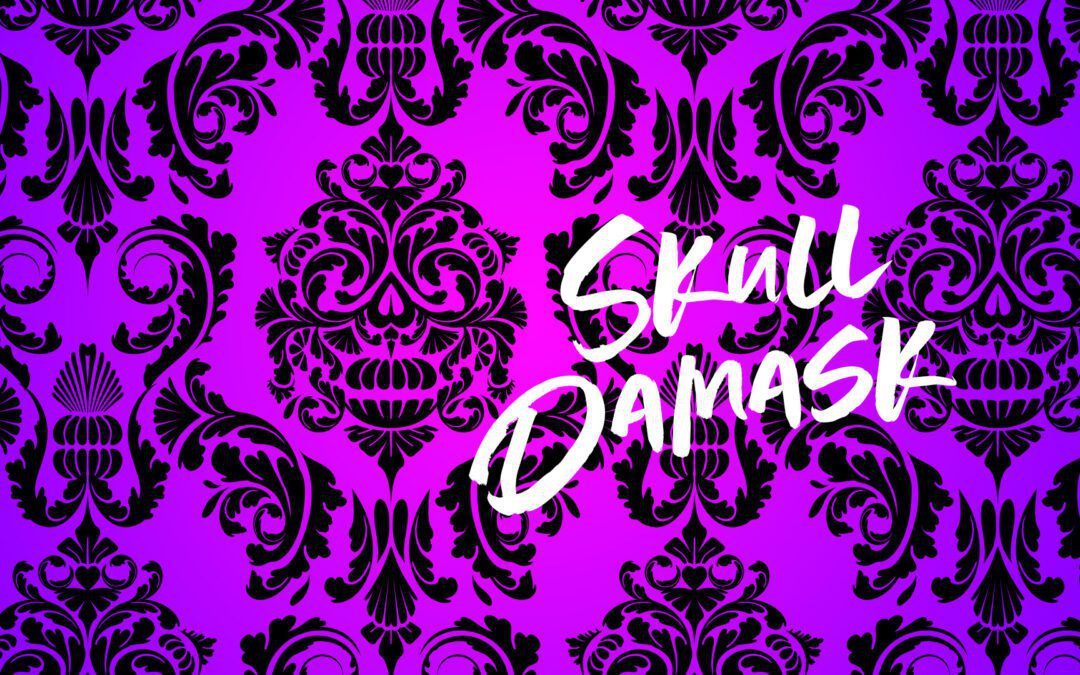I find the ornate patterning of damask intriguing. The medieval botanical and whimsical flourishes intricately woven into beautiful infinite patterns are striking even by today’s standards. Damask’s versatility as a reversible fabric with an inverse colour pattern on the other side makes it even more enjoyable. While damask has a reputation for being ostentatious and overly dramatic, I felt it would be an interesting side project to blend damask patterning with a “punk/rock” sense of rebellion. A sort of damask for the masses. This first experiment discusses the origins of damask and attempts to blend traditional with contemporary.

Origins of Damask
Damask pattern has traditionally been associated with the wealthy and elite. Although originally created in China, it was traded in Damascus’s prosperous medieval craft centre. As a result, damask patterns became synonymous with the exotic and luxurious. Because of their versatility and attractive design, medieval kings and queens sought to acquire damask tapestries and textiles of their own. In fact, medieval royals went so far as to get monks to steal artisan secrets. They’d also smuggle silkworms to have ways of producing their own unique patterns.
As a result, damask textiles have seen several resurgences in popularity over the centuries. The Baroque period was highlighted by artworks of grandeur and exuberance. During this period, damask was used in many different ways–including upholstery, wallpaper, and curtains. However, it was arguably at its peak in popularity during the Industrial Revolution. At this time, mass production made what was once considered a rich person’s textile into an affordable textile for the working middle class.
Modern Take on Damask Patterns
Today’s modern technologies have led further toward the democratization of damask by making the pattern even easier to draw and produce. Traditional motifs are cast aside for whatever patterns catch the eye of the consumer. Furthermore, damask has stepped away from the classic reversible fabric to one-sided prints in some instances. My experiment seeks to further the dialogue on what can be classified as damask through edgier and more “punk/rock” subject material. Not having access to a loom or a weaving mechanism myself (at this point), I hope to showcase the possible use of modern damask patterns through images and digital mock-ups.
My first damask pattern in a series of patterns is a damask skull. This is what damask looks like when someone decides to meld traditional flourishes with edgier modern imagery. Skulls have become a bit of a cliché in punk and rock, so it was important to make sure the skull wasn’t too obvious and that it still contained traditional flourishes seen in older damask patterning. As a result, something once considered luxurious is given a new life in a different subculture. It becomes a damask for the masses.
Do you have an idea for a cool damask pattern but need some assistance creating it? Connect with me over email through my website cyanbolddesign.com.
Check out my other articles in the Damask for the Masses series, or try to make a pattern following my seamless brush pattern tutorial.




